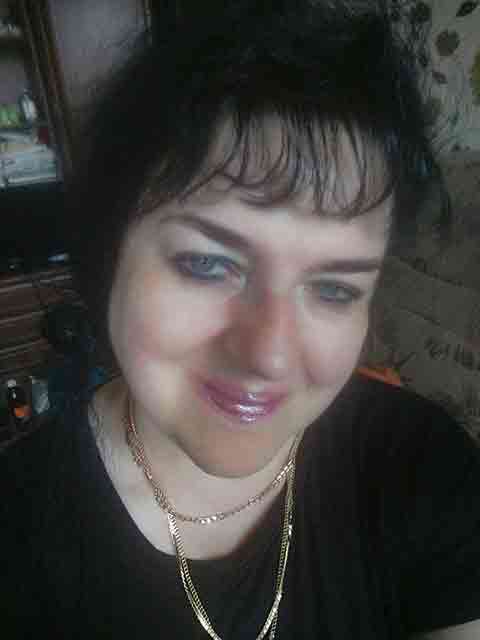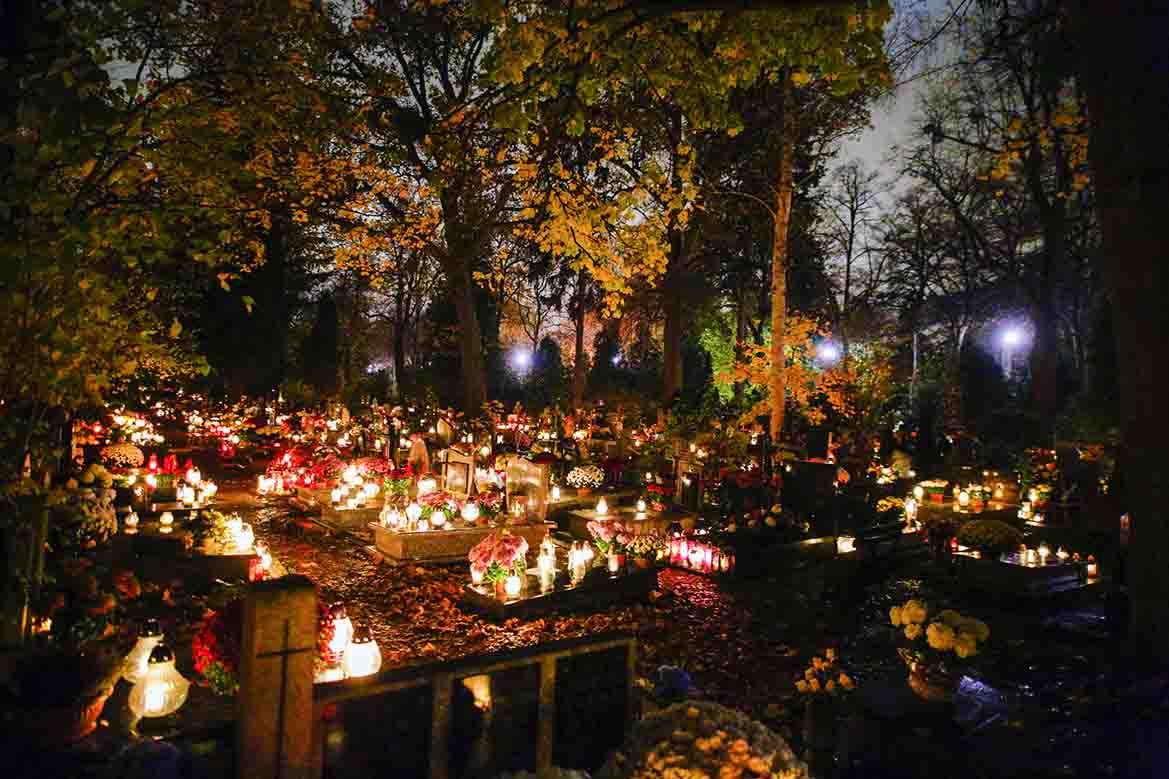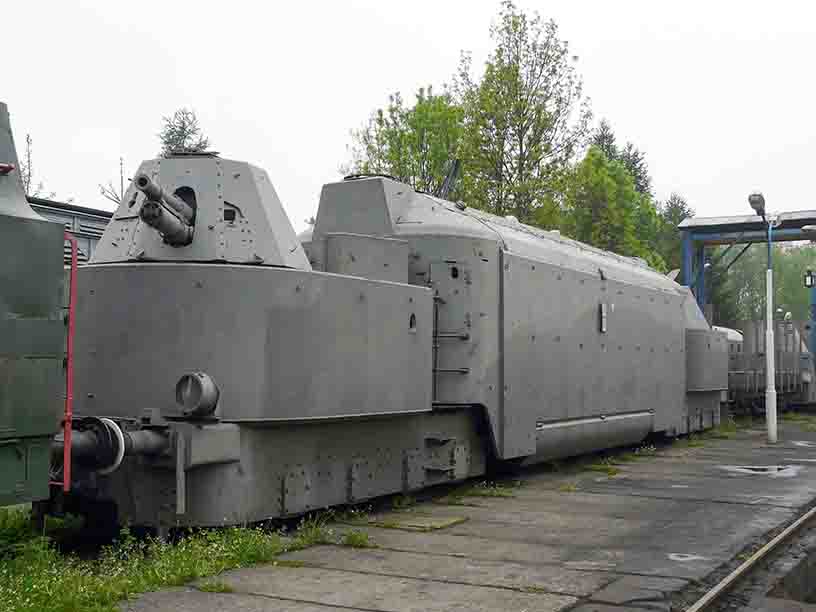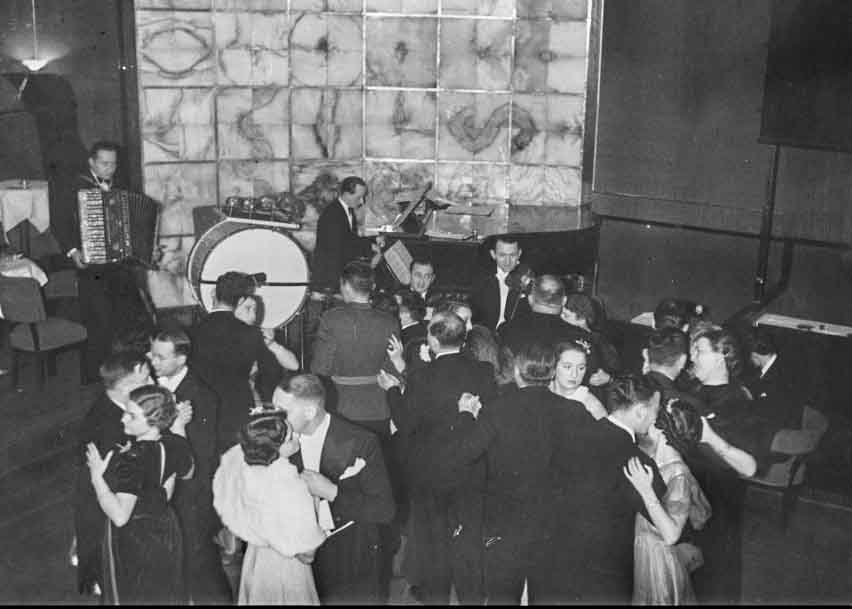The nativity scene (pol. szopka), as the father prelate Michał Słowikowski from Lublin used to say, "...is a kind of sacred scene that primarily represents the Holy Family and everything that happened in Bethlehem..."
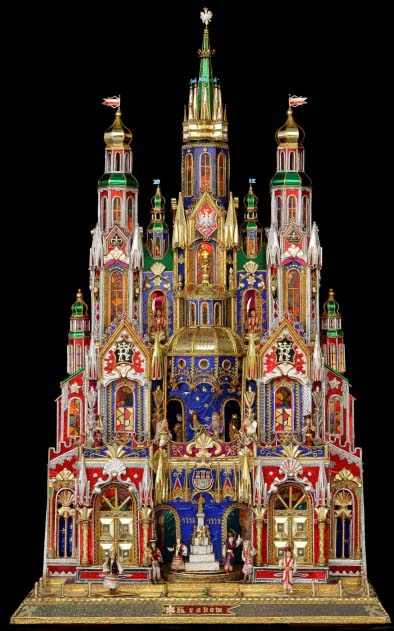
Nativity Scene by Bronisław Pięcik, 1998 (Source: Wikipedia)
Krakow Nativity Scenes
The Krakow nativity scenes are decorated, multi-story scenes with a specific architecture reminiscent of the city of Krakow. Of course, they also refer to the mystery of the Nativity. Krakow's nativity scene is on the UNESCO national heritage list and on the national intangible cultural heritage list.
Where Does this Custom Come from?
The custom of presenting the events related to the birth of Jesus comes from the cult of the Bethlehem crèche. The popularization of this type of show in the Old Continent took place in the 13th century, thanks to Saint Francis. It was he who in 1223, using the nature that surrounds him and living animals, showed the local inhabitants the details of the history of the birth of Christ.
As reported by Ireneusz Motyka, a sculptor from Starachowice, the statues of the Baby Jesus, Mary, and Joseph, carved in wood, must be made with the greatest degree of craftsmanship and precision. Everything, from the appearance of the face, staged body movements, to the selected colors of the characters, must be refined there. Animal figures may be less precise. "Even for the nativity scene at the Marian Sanctuary in Kałków Godowo, the carving of sheep and cattle, took me several months," relates the master sculptor.
A Rivalry Among Monasteries
Individual orders competed with each other, trying to present the characters in the nativity scene as faithfully as possible. At that time, rich ornaments were chosen, the scenes were brimming with colors. Over the years, a whole gallery of exotic characters has appeared in the Kraków nativity scene. They were Arabs, Persians, and even camels and Black Africans riding them. However, according to Marian priests, such figures do not fit in with the Kraków nativity scene. And for several decades now, they have no place in Krakow's nativity scenes.
In the 16th Century
In the 16th century, a kind of nativity play appeared in Poland, in which moving dolls took the lead. At that time, not only the motives related to the birth of the King of Kings were presented, but also the homeland motives related to Poland and its inhabitants. As associate professor Witold Biniewski adds, it was not only like that in the performances, but also often the king of Poland and his courtiers visited the Kraków nativity scene, as figurines representing them.
The 17th Century
“It is not difficult to guess that in the age of wars, the sheriff of the Turks at Vienna, King Jan III Sobieski, as well as Hetman Czarnecki and soldiers of the Polish hussars also visited the Kraków nativity scene. After the pogrom of the Swedes from Częstochowa, a figure of Augustyn Kordecki appeared in the nativity scene,” adds Witold Biniewski, associate professor from Pakosław.
Too Cheerful...
In 1736, bishop Teodor Czartoryski categorically forbade the display of nativity plays and nativity scenes in churches. They were then, according to him, "...too cheerful, so that the church takes on a secular character..." At that time, it was only possible to show the faithful the manger itself with the statues of the Holy Family, but they must have had sad faces. Performances forbidden in churches survived on the streets of Krakow, and they were organized by the church service, students and craftsmen. At the turn of the eighteenth and nineteenth centuries, the Krakow nativity scene which moved from house to house became popular. And the grateful hosts shared with the nativity scene makers everything they had in their homes. In the first half of the nineteenth century, the chronicler Ambroży Grabowski mentions such processions with a nativity scene in the streets of Krakow, which the inhabitants were eagerly awaiting with thick wallets.
A Storied Krakow Nativity Scene
The "Tygodnik Ilustrowany" (Illustrated Weekly) from 1862 records the fact that the Krakow nativity scene, which was made by the parishioners of St. Mary's Church, "...has the form of a one-story building covered with a shiny dome with two clock towers situated on the sides. Between the one-story outbuildings there is a partially enclosed proscenium, on which there are various types of figurines, whose feet and heads are movably connected with each other..."
"At the time, the figure of the tsar or the emperor of Prussia was also portrayed instead of the hated king Herod, because fo whom Poland was absent from the political map of the world," adds professor Biniewski.
The End of the 19th Century
The end of the 19th century brought an increase in interest in Polish customs. The partitioners forbade cultivating anything related to the Polish culture. But wise Poles, managed to represent what they wanted in nativity scenes, while the invaders did not always understand it all. Therefore, the Krakow nativity scene could not be complete without the evil Dorota with a bucket of water, which symbolized the end of everything that was bad for Poles. In such a scene there was always a merchandising Jew, well known in Krakow, and Maciej, a stall-holding merchant, symbolizing the most common profession of Krakow residents.
At Wawel…
In the 1920s, a beautiful Krakow nativity scene was exhibited at the Wawel Ethnographic Museum. It was made of wooden slats mounted on a solid, thick board. In addition, it was covered with colored paper in red, yellow and pink. The nativity scene was 63 cm wide and 73 cm high, remaining faithful to the look of the church façade.
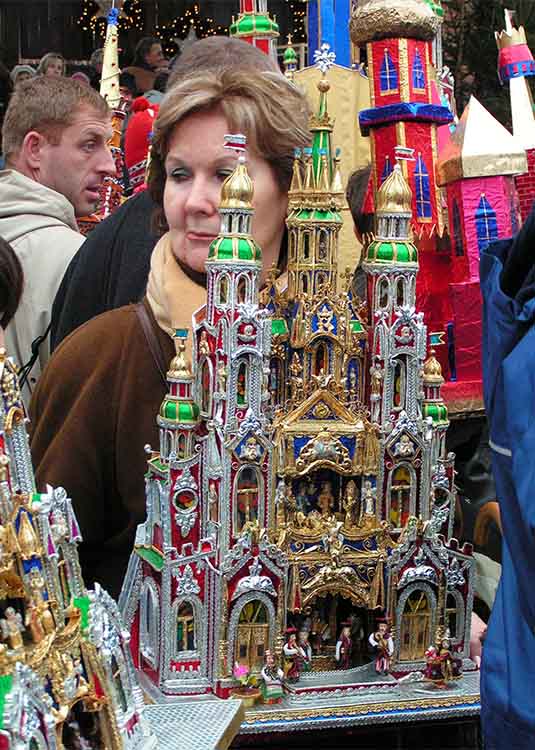
Krakow Nativity Scene (Source: Wikipedia)
In the second half of the 19th century, architectural features that clearly distinguished the nativity scenes made in Krakow have developed. They were influenced by the patterns of historic Krakow buildings, including, of course, Wawel and Krakow's churches. The variety of Krakow monuments provided the creators of nativity scenes with a lot of inspiration. Thus, a Krakow nativity architecture developed, with a tall and slender structure.
The creator of the most famous nativity scene in Krakow was Michał Ezenekier, who was both a bricklayer and a tiler. The nativity scenes created by him have always been a kind of canon and model of Krakow nativity scenes. His son Leon, who specializes in carving nativity scenes, continued his handicrafts until the Great War, which ended the golden period of the Krakow nativity scene. During the aforementioned war, the Austrian authorities banned caroling and the performance of nativity scenes.
The Interwar Period
In the interwar period, traditionalists from Krakow started reviving the nativity scene tradition. In 1923, on the initiative of the director of the Archives of Historical Records of the city of Krakow, Ludwik Strojk, the Industrial Museum in Krakow began presenting biblical motifs related to the birth of Jesus, using a nativity scene modeled on Ezenekier. People carrying the crib around the houses of the then inhabitants of Krakow appeared again in the suburbs of Krakow.
However, in the 1930s, the craftsmanship of nativity scenes decreased significantly. At that time, almost exclusively small nativity scenes, intended for sale, were made. But few people wanted to buy such nativity scenes, which was related to the economic crisis of that period.

Basilica of St. Josaphat, Milwaukee, WI (Photo: W. Biniecki)
The basic material for the nativity scene was very thin wood or plywood, rarely cardboard. Some nativity scene makers also used colored plaques. The ornaments, on the other hand, were most often made of staniol sheets. Nativity scene stained glass windows were made of paper lined with colored cellophane, less often they were made of glass. Lighting in the aforementioned nativity scenes appeared in the mid-sixties of the last century.
The central part of this Krakow nativity scene building is filled with a niche with figurines. They were always ordered from the most skilled practitioners of the sculpting art. At that time, the nativity scene always referred to the style of St. Mary's Church, so it was very tall and slender. The figurines were made of wood, less often made of wire and cloth.
Taking Care of the Tradition
The Historical Museum of the City of Krakow takes care of Krakow's nativity scene traditions, which since 1946 has been organizing annual competitions, and since 1953 also post-competition exhibitions of nativity scenes. Thanks to the aforementioned competitions, numerous institutions and private collectors from all over the world became interested in Kraków nativity scenes.



